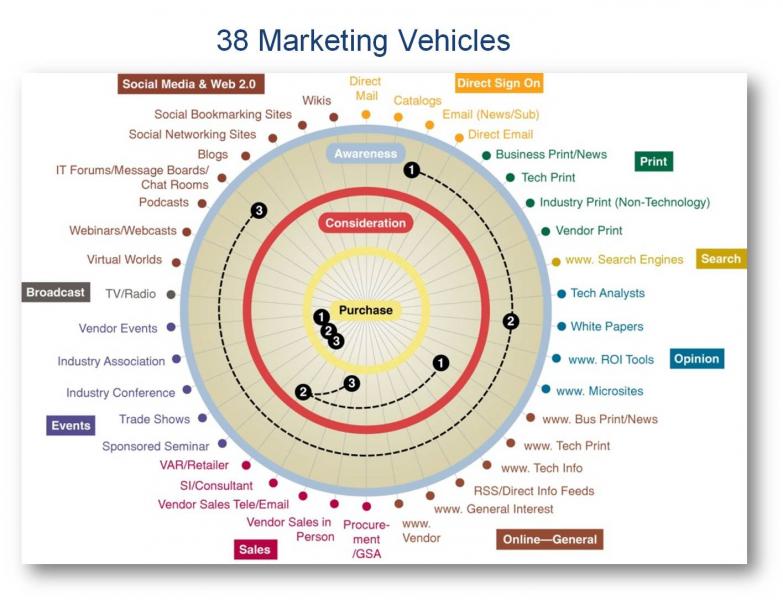How Many Marketing Vehicles Do You Need? Guiding Principle Number Two
Last week I provided the first of five guiding principles for technology marketers, based on over 100,000 tech buyer interviews and countless client interactions. Now it’s time for the second guiding principle.
Guiding Principle Number Two: Marketing Vehicles

Forrester tracks the relative importance of 38 different marketing vehicles across awareness, consideration, and purchase (i.e., email, tradeshows, search, display ads, etc. I’ve included a picture of these 38 vehicles below.) It’s the tech marketer’s job, and a difficult one at that, to decide how many are actually necessary. That’s where the second guiding principle comes in: On average, 7.6 of these 38 marketing vehicles are used by a technology buyer/influencer. For example, an IT manager who is evaluating a new technology purchase will use between seven and eight different sources as he/she becomes aware of the solution, considers the solution, and makes/influences a purchase decision. Similarly, a line-of-business professional involved in the same purchase will also use between seven and eight sources. Since these two individuals are involved in the same purchasing decision, the sophisticated marketer should also look to determine which vehicles (sources) are shared, thus providing an opportunity for reuse and bridging the two influencers together.
So the next time you are deciding how many marketing vehicles are actually necessary for each of the different buyers/influencers you’re targeting, remember the 7.6 rule — it will serve you well.
About the data: These data points come from the Forrester Tech Marketing Navigator database and decision tool that helps tech marketers reach and influence their buyers. Forrester Tech Marketing Navigator measures how tech buyers and influencers consume marketing across awareness, consideration, and purchase. The data is collected through more than 20,000 interviews per year, covering 20-plus technology categories, across 11 geographies, and annually influences more than $4 billion in marketing program spend.
